Consolidation, caps urged to speed clean energy permitting across state
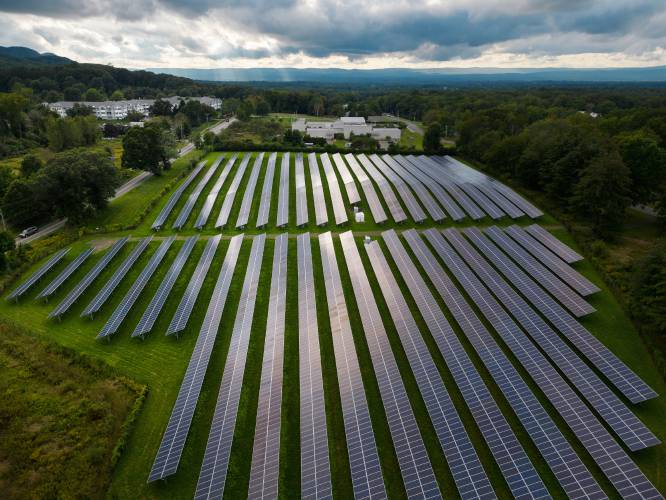
A field of solar panels along West Bay Road in Amherst. On Monday, Gov. Maura Healey’s Commission on Clean Energy Infrastructure Siting and Permitting laid out its recommendations in a new report. GAZETTE FILE PHOTO
| Published: 04-02-2024 4:19 PM |
BOSTON — In anticipation of a boom in clean energy projects needed to help the state meet its decarbonization targets, a group put together by the governor rolled out recommendations Monday for ways to streamline and accelerate the siting and permitting of clean energy infrastructure — and the topic appears primed for legislative action in the next four months.
Gov. Maura Healey’s Commission on Clean Energy Infrastructure Siting and Permitting laid out its recommendations, including proposals to consolidate permitting at both the municipal and Energy Facilities Siting Board levels while also building community engagement requirements into the process.
The recommendations come as key lawmakers are developing a wide-reaching energy and climate bill before formal business wraps up in July. One lawmaker writing that bill said last year that “this issue of siting and permitting is likely to be a major preoccupation of the Legislature.”
There is general agreement among utility companies, environmental activists and others that the energy project permitting and siting process as it exists today is a poor model. It often takes a long time to get a project through the process, it can be overly complicated for the public to follow proceedings, it requires a lot of money for both proponents and opponents alike, it does not always incorporate feedback from impacted communities, and disproportionately those impacted communities are places where residents are poorer, part of a minority population or speak a language other than English.
Last week, the Union of Concerned Scientists, GreenRoots, Conservation Law Foundation, and Alternatives for Community & Environment released a report that found that more than 80% of fossil-fueled electricity generating units in Massachusetts are located within one mile of so-called environmental justice communities where people of color, low-income people, and limited-English proficient speakers live.
The commission called for legislation to consolidate all state, regional and local permits required for larger clean energy infrastructure projects into one permit to be issued by the Energy Facilities Siting Board in no more than 15 months, and to combine all local permits for smaller clean energy infrastructure projects into one consolidated permit to be issued by the municipality in less than one year.
At a maximum of 15 months, the timeline contemplated by the commission would be shorter than nearly any EFSB approval process in the last 25 years or so, according to a state official who detailed the group’s work on background.
“To meet our emissions limits, we need to build much more clean energy infrastructure, and we need to build it much quicker than we have to date,” Healey said Monday. “With that infrastructure in place, not only will we be better positioned to meet our climate goals, but we will also attract and support life sciences, climatetech, and other major industries looking to grow in Massachusetts.”
Article continues after...
Yesterday's Most Read Articles
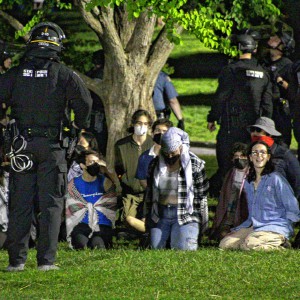 More than 130 arrested at pro-Palestinian protest at UMass
More than 130 arrested at pro-Palestinian protest at UMass
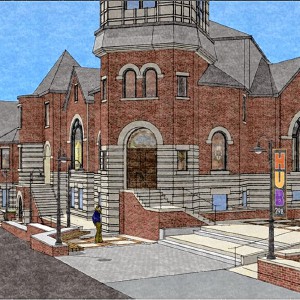 Public gets a look at progress on Northampton Resilience Hub
Public gets a look at progress on Northampton Resilience Hub
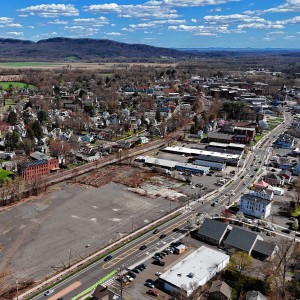 Northampton bans auto dealerships near downtown; zone change won’t affect Volvo operation on King Street
Northampton bans auto dealerships near downtown; zone change won’t affect Volvo operation on King Street
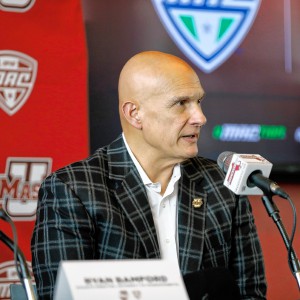 UMass basketball: Bryant forward Daniel Rivera to be Minutemen’s first transfer of the offseason
UMass basketball: Bryant forward Daniel Rivera to be Minutemen’s first transfer of the offseason
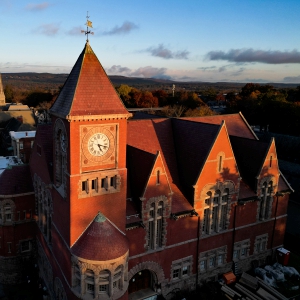 Town manager’s plan shorts Amherst Regional Schools’ budget
Town manager’s plan shorts Amherst Regional Schools’ budget
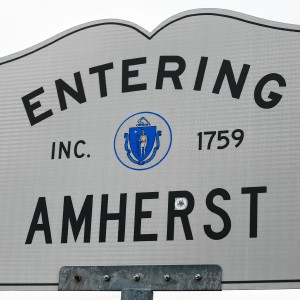 Police respond to alcohol-fueled incidents in Amherst
Police respond to alcohol-fueled incidents in Amherst
Massachusetts has committed itself to ratcheting down greenhouse gas emissions to the net zero level by 2050, with crucial checkpoints along the way. The primary strategy is to pivot energy generation toward cleaner sources like solar and offshore wind, and simultaneously maximize the electrification of buildings and transportation.
That will create significantly greater demand for electricity. The commission’s report said heating electrification demand “is expected to increase by a factor of 17 to 19 between 2023 and 2032” and that electric vehicle charging demand “is expected to increase by a factor of 13 by 2030.” That means Massachusetts will need to more than double its supply of electricity from solar energy, install more than 3,000 megawatts of offshore wind and nearly as much additional energy storage by 2030, and make significant upgrades to the electrical grid.
The commission’s recommendations also call for new requirements related to community engagement. Currently, there is nothing specific a project developer has to do before filing for permits, though there is an expectation that developers will engage with the community where a project would be located. The commission called on lawmakers to impose specific requirements around the number and type of meetings that must be held, public comment periods, the affected parties that need to be contacted and communicated with, what project details need to be provided to communities in advance, and more.
To facilitate that engagement, the commission recommended the establishment of an Office of Community Engagement within the EFSB (to assist on projects with state-level jurisdiction) and the creation of a new Division of Energy Siting and Permitting within the Department of Energy Resources (to help municipalities on projects at that level of jurisdiction).
“What really stands out to me is the desire to weave into siting and permitting the commonwealth’s recently established climate goals, resiliency goals, natural and working lands, biodiversity, and environmental equity and justice,” commission member Steve Long, director of policy and partnerships for The Nature Conservancy in Massachusetts, said. “These are all new things that are not currently woven into siting and permitting. And because we will now have site suitability and community guidelines, these are things that will be tangible and meaningful and will be considered.”
But just as time is of the essence for clean energy projects, so too is it for the commission’s legislative recommendations. The group’s report Monday said that it will likely take about 18 months from the time the Legislature enacts any reforms until the detailed regulations governing the new processes would be fully in place. The state official estimated that the recommended new framework could be ready in late 2025 or early 2026, and added that the Healey administration is committed to working with the Legislature to advance permitting and siting reform language in legislation this session.
“Our decarbonization strategy is clear — to get to net zero emissions by 2050, we need an enormous increase in electric vehicles, heat pumps, and clean energy resources. We further need a dramatically expanded power grid to be the backbone of this transformation,” Rep. Jeff Roy, the House chairman of the TUE Committee, said Monday in an administration press release. “We cannot achieve this clean energy future without comprehensive reform and the commission’s recommendations — the work product of extensive, collaborative deliberations — provide a solid foundation to get there.”
Roy and his co-chair, Sen. Michael Barrett, were non-voting members of the commission. The state official said both lawmakers were active participants and got a full understanding of the commission’s recommendations and the thinking that went into them.

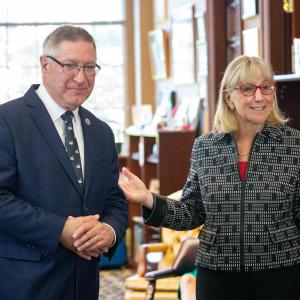 State Senate budget funds free community college for all
State Senate budget funds free community college for all ‘We can just be who we are’: Thousands show support for LGBTQ community at Hampshire Pride
‘We can just be who we are’: Thousands show support for LGBTQ community at Hampshire Pride Doors open at Tilton Library’s temporary home at South Deerfield Congregational Church
Doors open at Tilton Library’s temporary home at South Deerfield Congregational Church Area property deed transfers, May 2
Area property deed transfers, May 2
